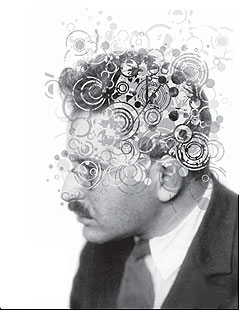“Men make their own history, but they do not make it just as they please; they do not make it under circumstances chosen by themselves, but under circumstances directly encountered, given and transmitted from the past. The tradition of all the dead generations weighs like a nightmare on the brain of the living.”
– Karl Marx, The Eighteenth Brumaire of Louis Bonaparte
I am happy that the opening paragraph of Walter Johnson’s “On Agency” quotes Marx on the question of structure and human action, so that I won’t have to (ok, I lied, I reposted it above). Aside from giving this blog its title, I, like Johnson, think of those two sentences as a particularly powerful formulation regarding both historical analysis and political action. While some view events solely as the product of long-term structural developments, and others excessively emphasize the ability of individuals to shape their own trajectory, Marx’s guidelines elegantly hit the nail on the head.
Much of humanity could be said to have experienced life as a continuous stream of extraction for the material benefit of others. James C. Scott’s Domination and the Arts of the Resistance: Hidden Transcripts is a sustained meditation on the myriad ways that oppressed people continually resist their subordination, short of open rebellion. Scott argues that the vast majority of interactions between dominant and subordinate unfold according to what he calls “the public transcript,” or the rules of conduct imposed by the dominant. In other words, the exploited are forced to, or seek to, confirm the expectations of their exploiters in order to carry on with their lives without enduring additional hardship. Conversely, the “hidden transcript” consists of the behavior the subordinate group produces away from the gaze of the powerful. Scott’s point is not that the hidden transcript contains the “truth” while the public transcript is “false,” but that both patterns of behavior are governed by power relations, and are shaped by and for the expectations of their consumers. In other words, all behavior can be described as social performance.
Though Scott constructs his argument using examples from across the globe and historical epochs, his line of inquiry is premised on two important limitations of scope. First, he is solely concerned with analyzing resistance to oppression in everyday situations, not in open rebellions, revolutions, or wars. Equally important is his disclaimer that he examines only severe cases of oppression and exploitation, such as “slavery, serfdom, and caste subordination,” with additional examples culled from “patriarchal domination, colonialism, racism, and even from total institutions such as jails and prisoner of war camps” (x). These cases, he argues, are representative enough to be able to glean a general pattern of resistant practices.
One of the most thought-provoking implications of this argument is the contention that far too much social science research is based solely on the public transcript, or sources produced by and for the powerful (xii, 13). This bias inevitably privileges the views of dominant powers over those of their subordinates, and fundamentally distorts our understanding of past and present. The book is therefore designed to be a theoretical intervention that seeks to reveal unseen vistas of inquiry: the domain of what Scott labels “infrapolitics,” or “the circumspect struggle waged daily by subordinate groups…like infrared rays, beyond the visible end of the spectrum” (183). Unlike many who argue that dissent sanctioned by or invisible to the dominant classes only strengthen the rule of the powerful, Scott argues that infrapolitics provide the necessary infrastructure for future open revolt. There is great value in this argument, I think. He argues that a full account of social history must take into consideration the public and hidden transcripts of both subordinate and dominant groups. In order to do this, one must consider the behavior of dominants with other dominants, dominants with subordinates, and subordinates with other subordinates. This is certainly a tall order, but Scott is able to live up to the challenge and the book is filled with many productive arguments that would take far too much time for me to summarize them here.
However, in a curious but key chapter, “False Consciousness or Laying it on Thick?,” Scott attempts to dispense with the Marxian conceptions of false consciousness and hegemony. Scott is not convincing. Despite his assertion to the contrary, he reconstructs the Italian Marxist Antonio Gramsci’s theory of hegemony as a straw man. In fact, Scott’s arguments do not appear to significantly diverge from the followers of Gramsci that I have read, except that Scott is perhaps overly focused on black-and-white examples of domination! At times his definition of what actions constitute “resistance” becomes so broad that dissimulation appears to be the only tactic that he approves of. Significantly, Scott’s argument ignores any discussion of the collaboration of subordinates in the domination of others. This is a major omission, especially considering his strident defense of those who dissent within the confines of dominant ideology. Such a mode of analysis threatens to declare resistance everywhere – and therefore nowhere. To quote Johnson’s wonderful phrase, “breaking a tool and being Nat Turner [are] not identical” (118).
In the end, Scott largely concurs with Marx’s statement in The Eighteenth Brumaire regarding the dilemma of structure versus individual agency, and thus with Johnson and a host of other scholars. Scott argues the subordinate is constrained by “a form of domination [that] creates certain possibilities for the production of a hidden transcript,” however, “whether these possibilities are realized or not, and how they find expression, depends on the constant agency of subordinates in seizing, defending, and enlarging a normative power field” (132). Domination and the Arts of Resistance surely helps us to think more critically about supposedly “quiet” periods of history, and maps out some exciting approaches to interpreting the activities of the oppressed as well as the oppressors.
